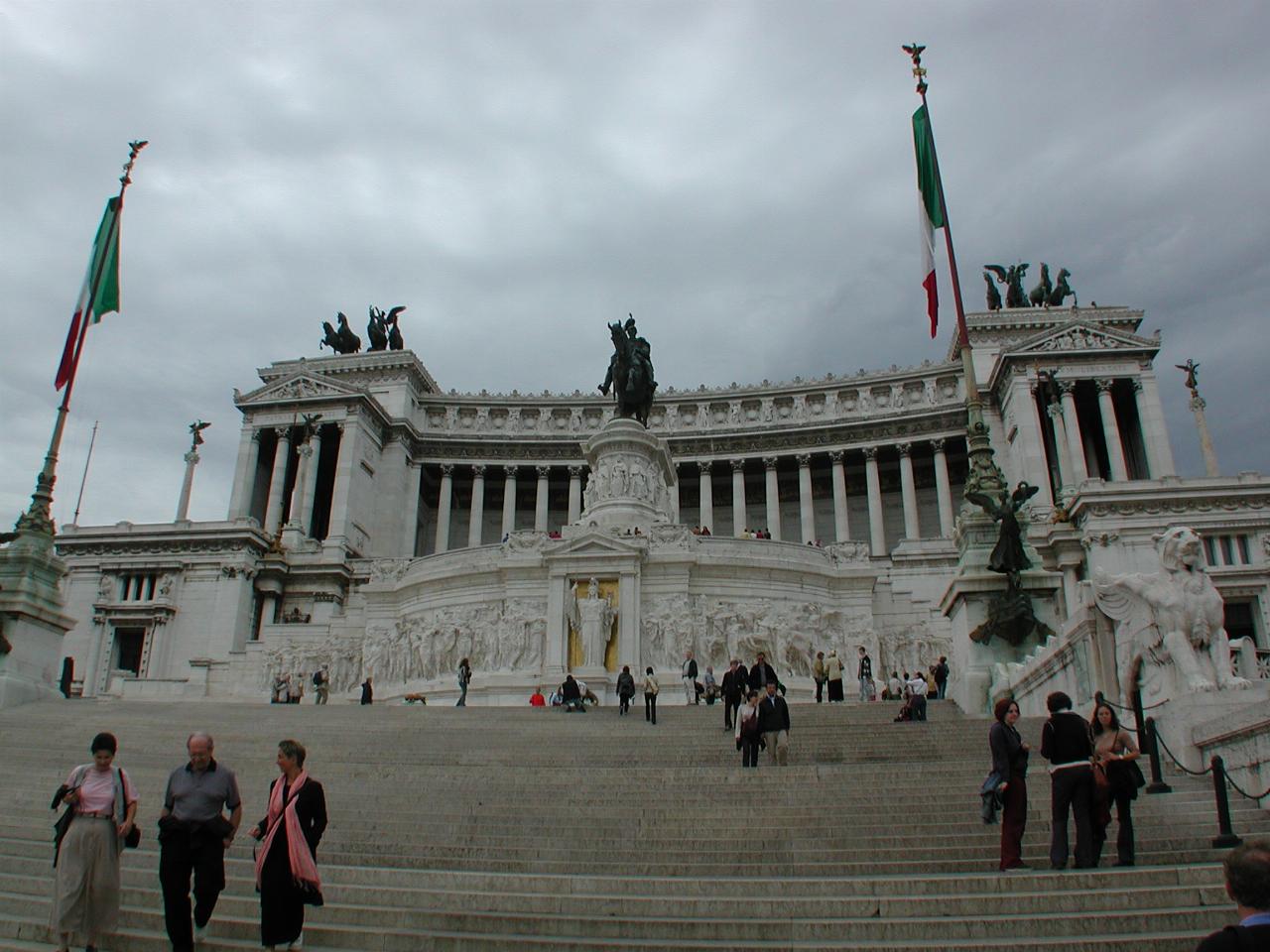
After leaving the Forum, Peter, Yvonne and I dropped out of the remainder of the day's organised tour. It covered areas that we had already visited, so we stayed nearby. Enjoyed a delightful light lunch at a sidewalk cafe (even though there was a light drizzle), and found a cybercafe for Peter to send some email.
After lunch, we wandered back towards the Colosseum and onto St. Clements church for a final Roman Mass.

Looking up the monument from its base. The two colossal chariots (top of each side) are surmounted by winged Victories, whose dark bronze contrasts with the white marble and thus makes them visible against the Roman skyline. They were made by Carlo Fontana and Paolo Bartolini in 1908.
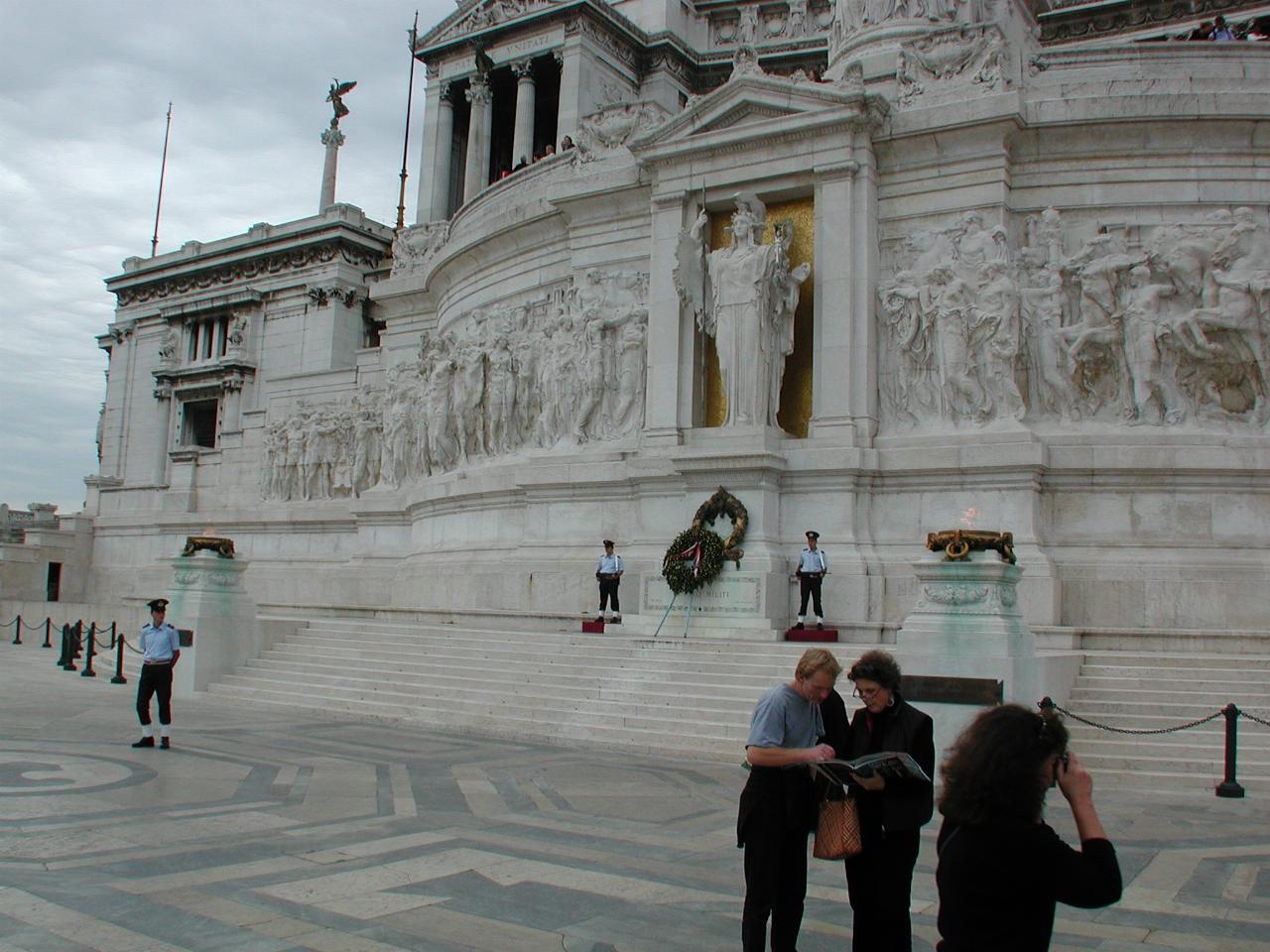
The Altar of the Fatherland, crowned by the Statue of Rome, at whose feet, since 1921 lies the Tomb of the Unknown Soldier.

An overview of Rome in Vittoriana.
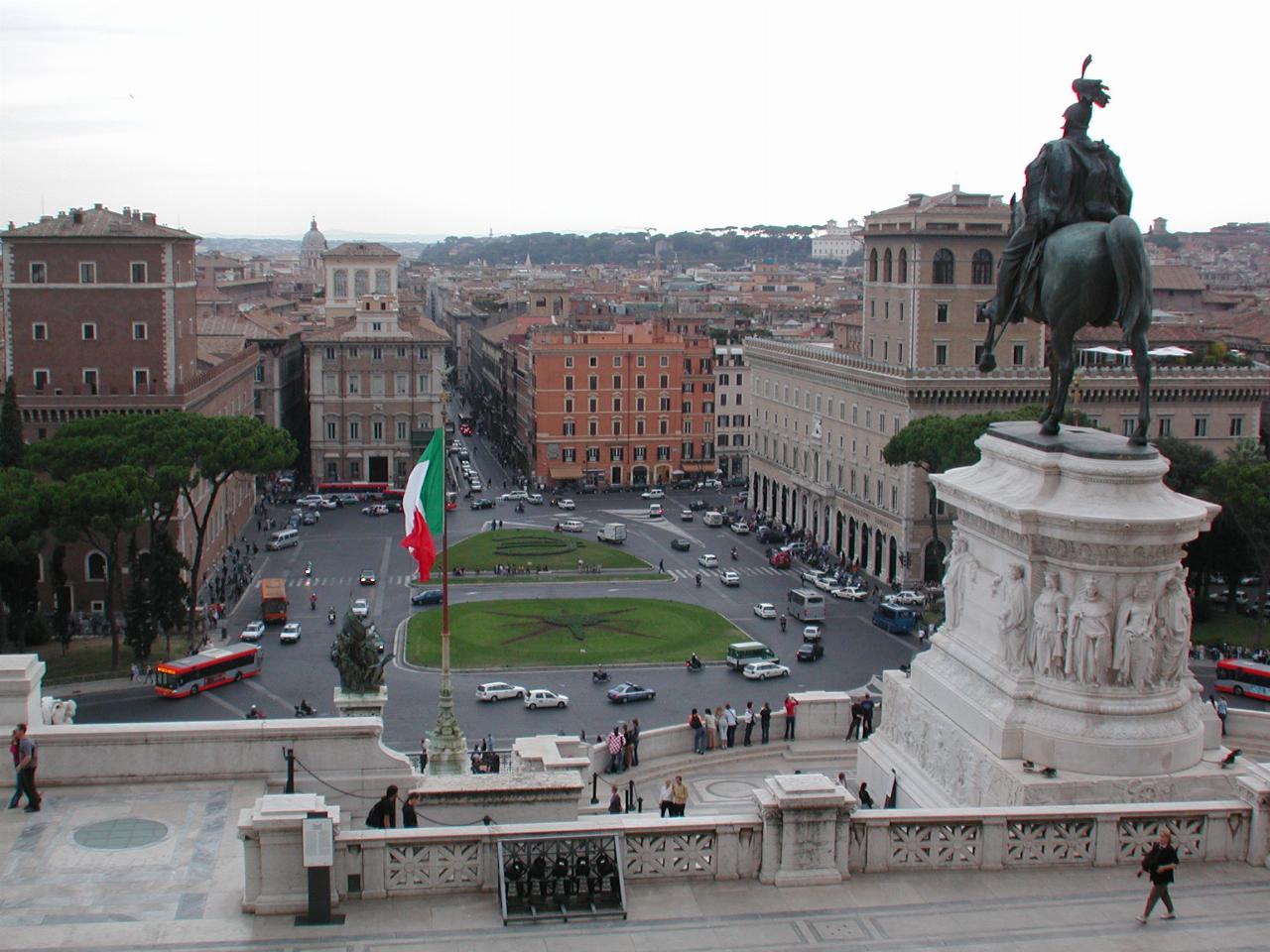
The Piazza Venezia takes its name from Palazzo Venezia, built in 1455 by the Venetian Pope Paul II (1461 - 1471). It was the first great Renaissance palace in Rome, and was richly decorated with outstanding works of art. The structure typifies the early Renaissance period, as it marked the transition to a modern palace from a medieval fortified dwelling of which it retains certain features. [I don't know which, if any, of the visible buildings this is describing.]
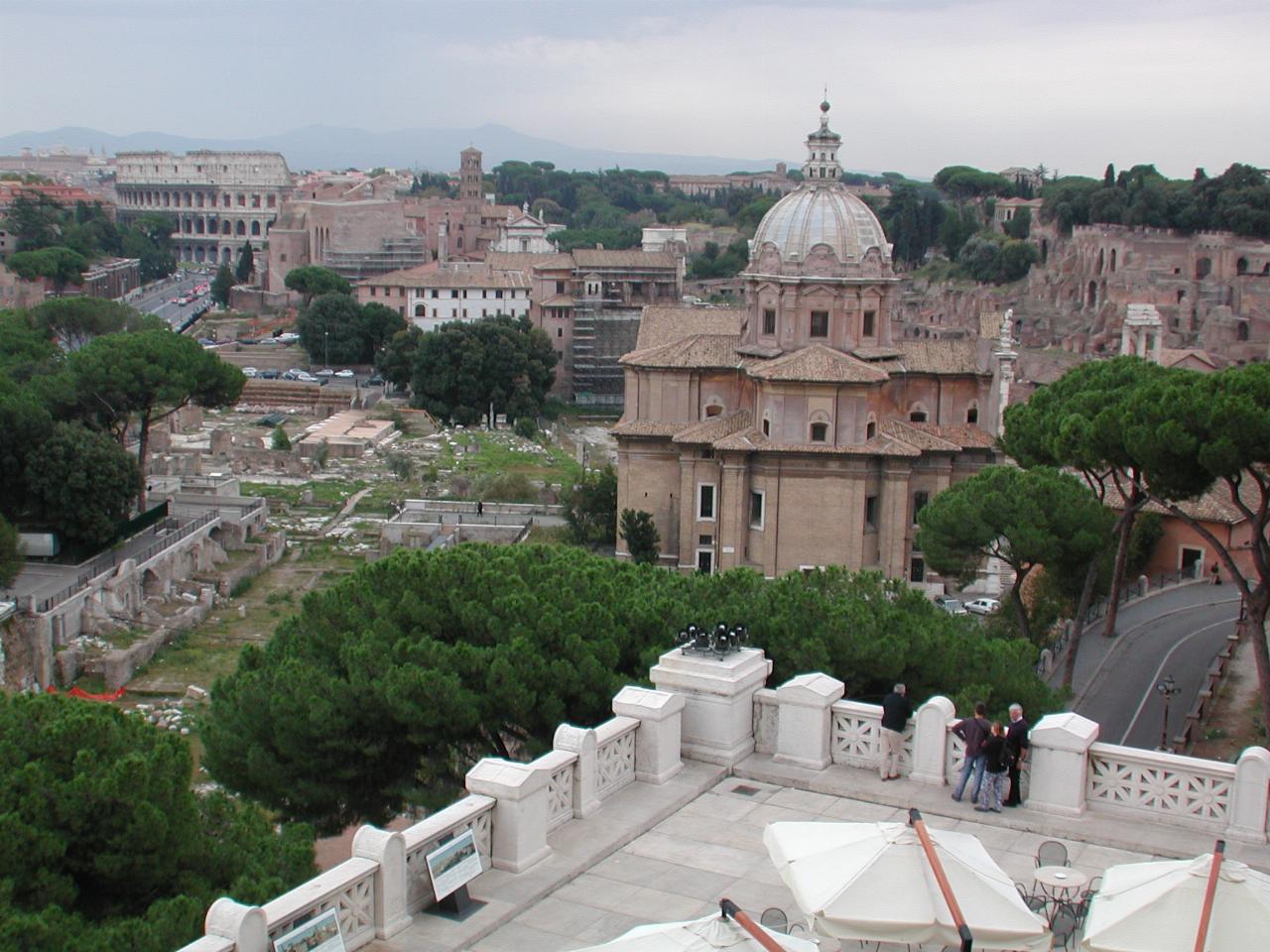
Looking out from the top of the Monument over the Roman Forum towards the Colosseum.
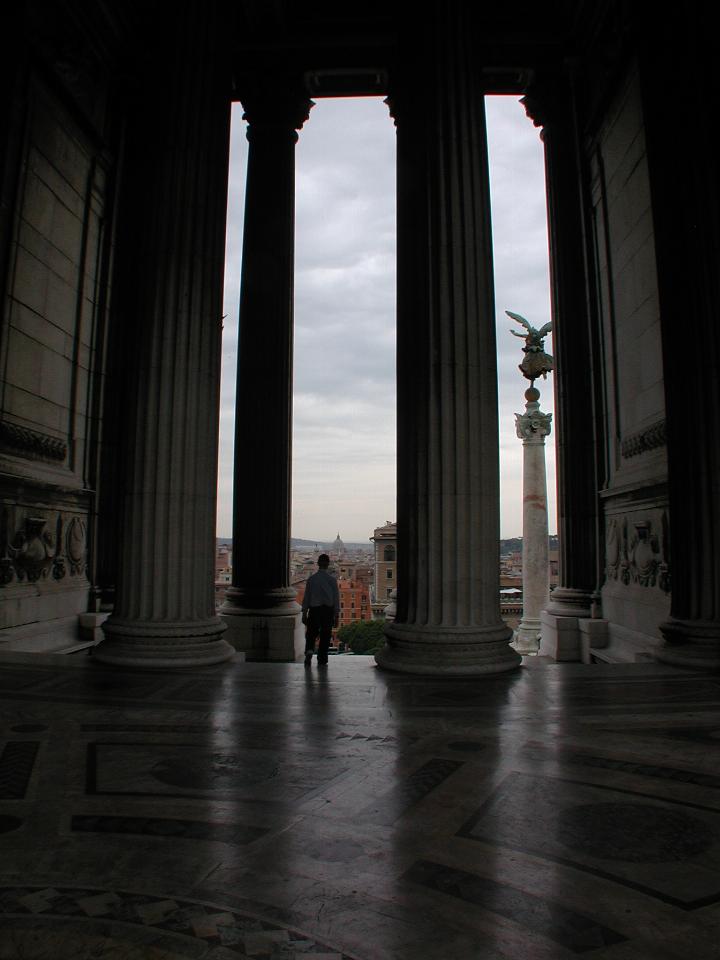
Peter walking towards the stairs to descend the 235 steps to the base. It is a building on a grand scale.
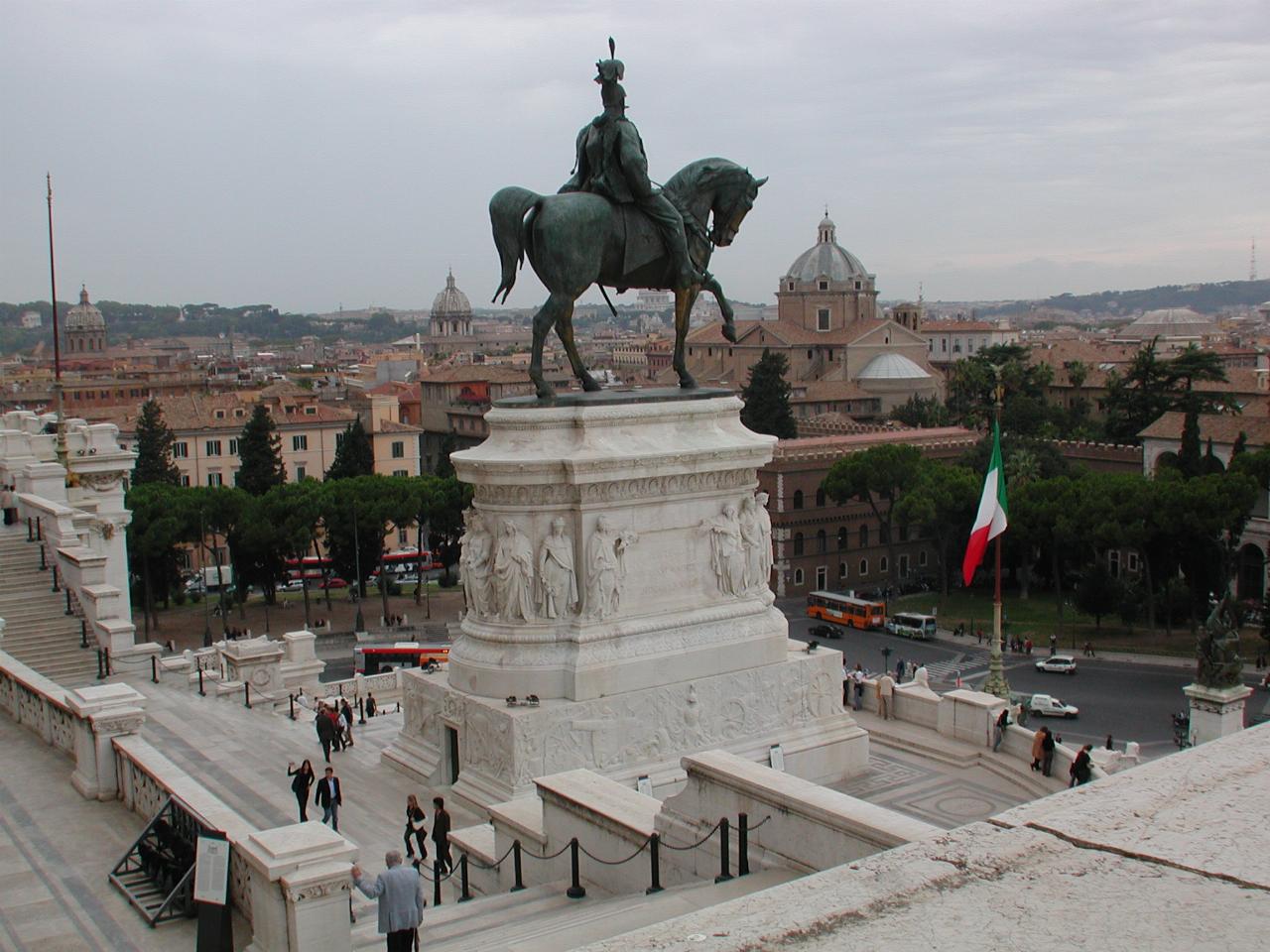
Victor Emmanuel II on horseback. The Venetian sculptor Chiaradia worked for twenty years on this statue, which was completed in 1901 by Gallori after the death of the artist. The elaborate bas-reliefs on the base, which represent the most famous Italian cities, were designed by Maccagnani, who for many years collaborated with Sacconi (monument's designer) in carving the three dimensional ornamentation.